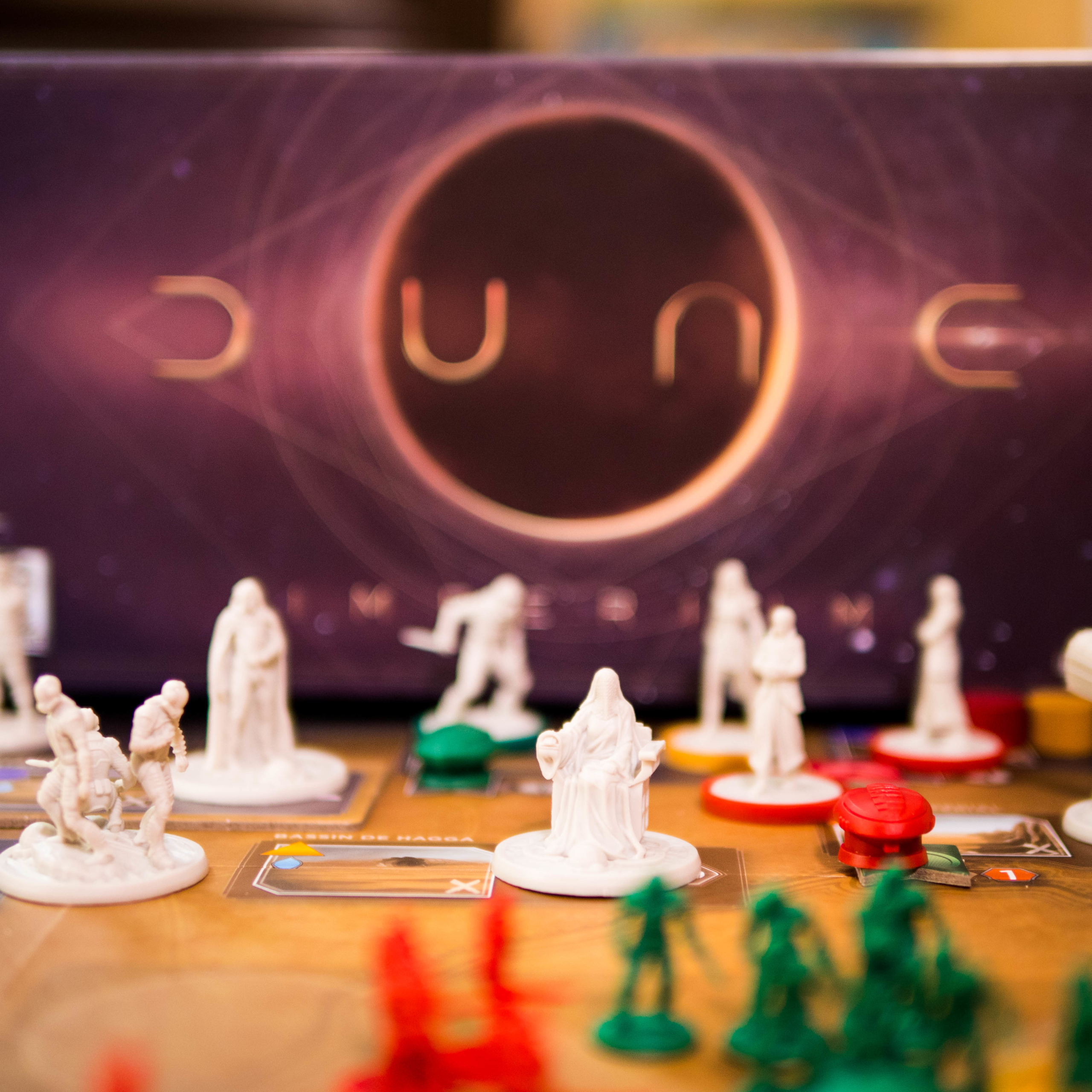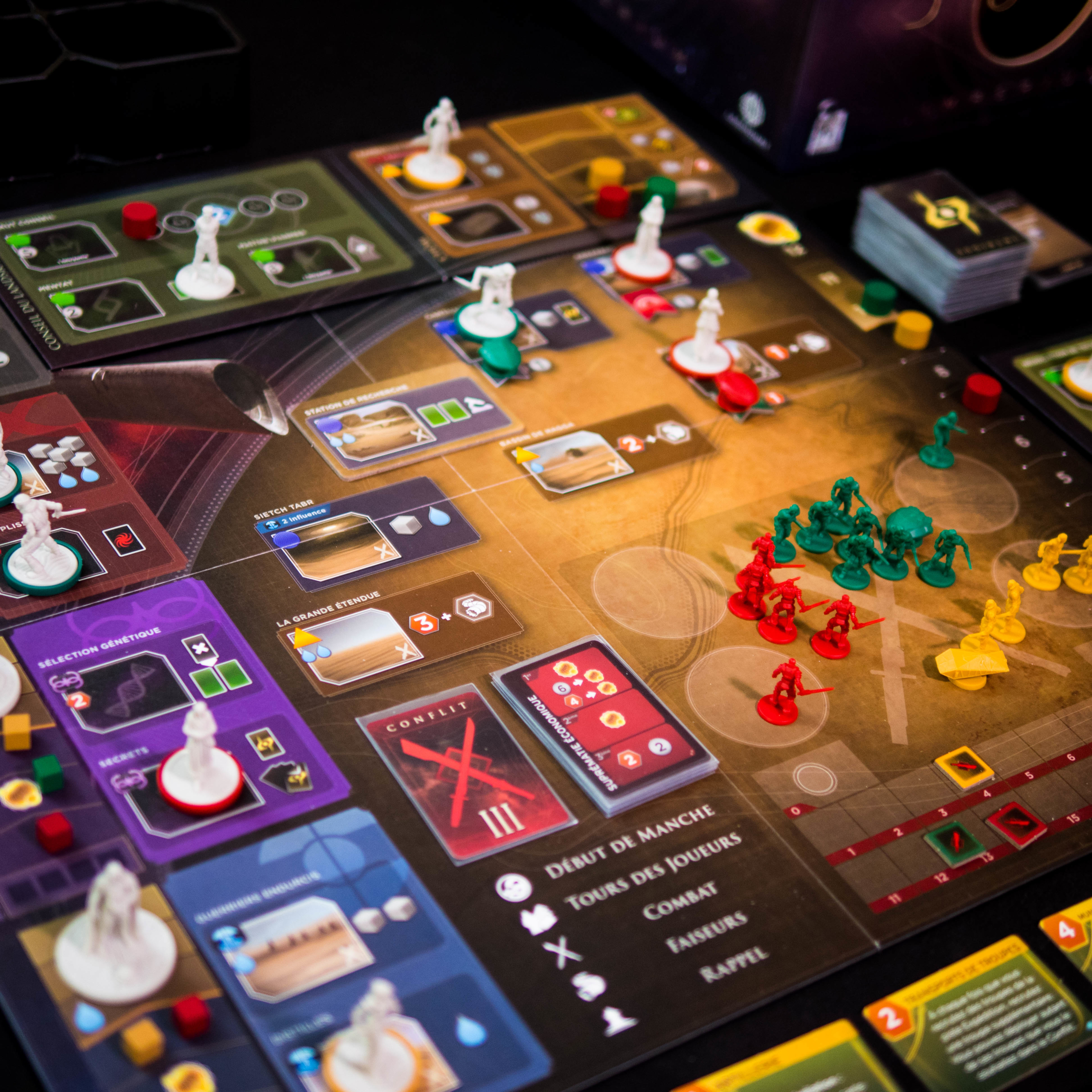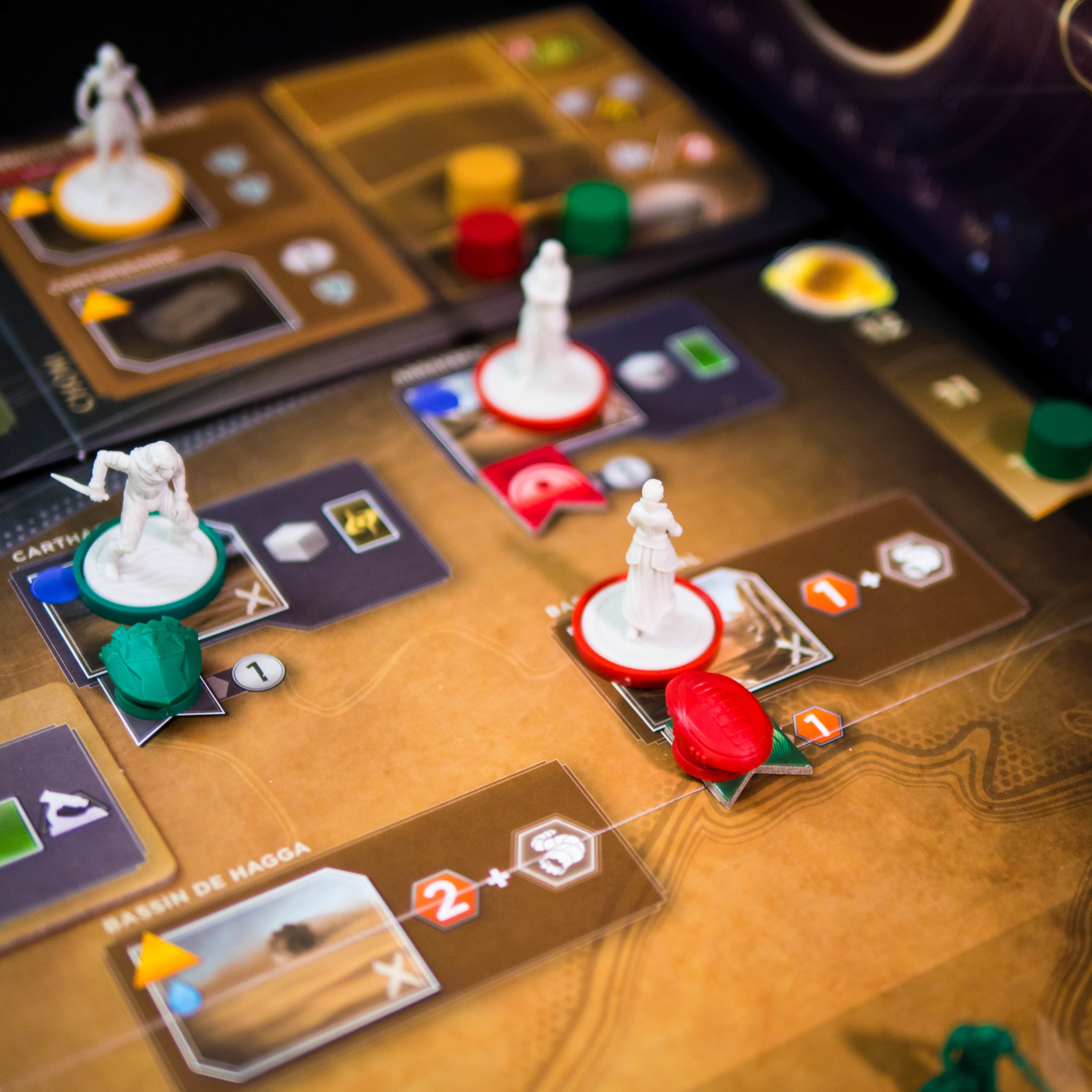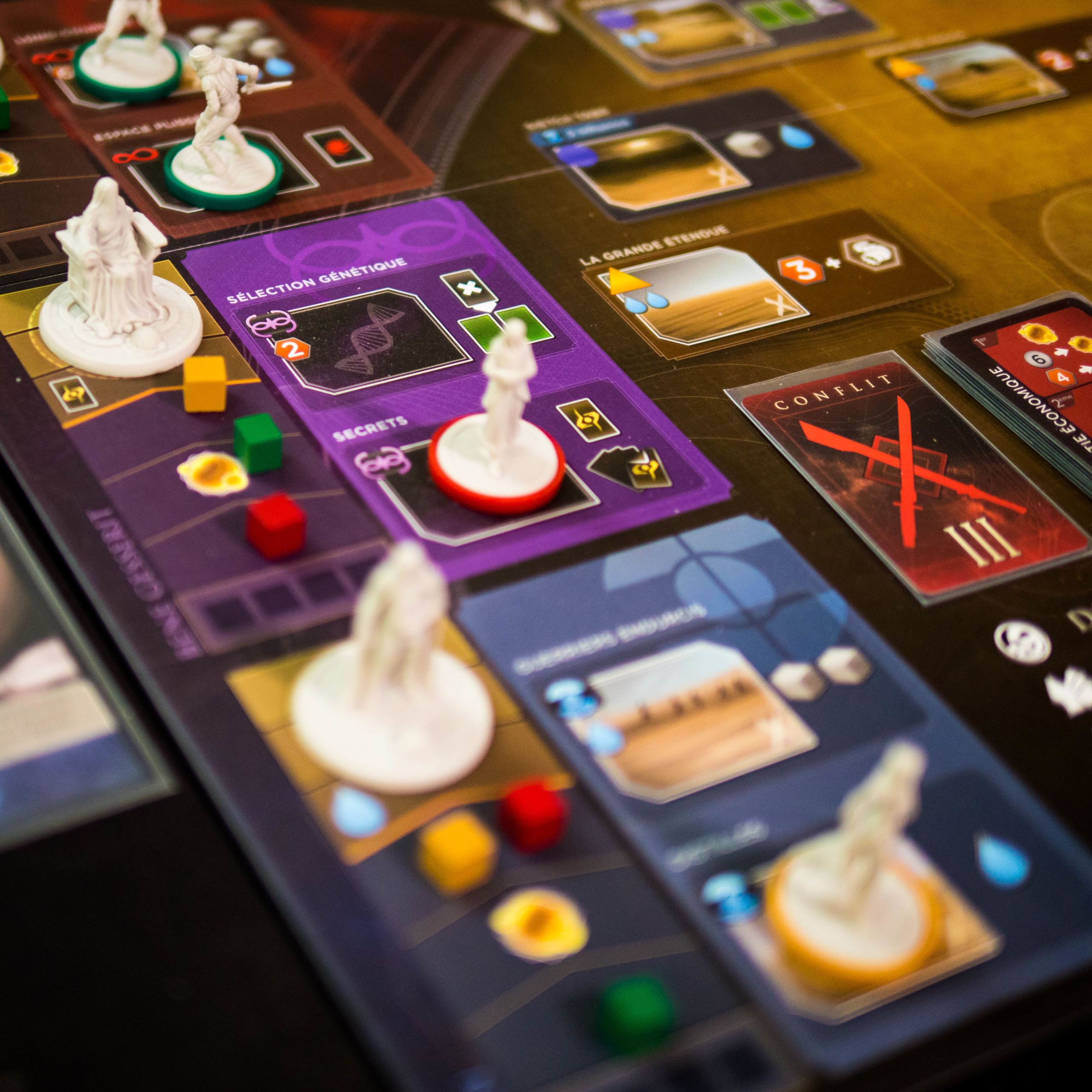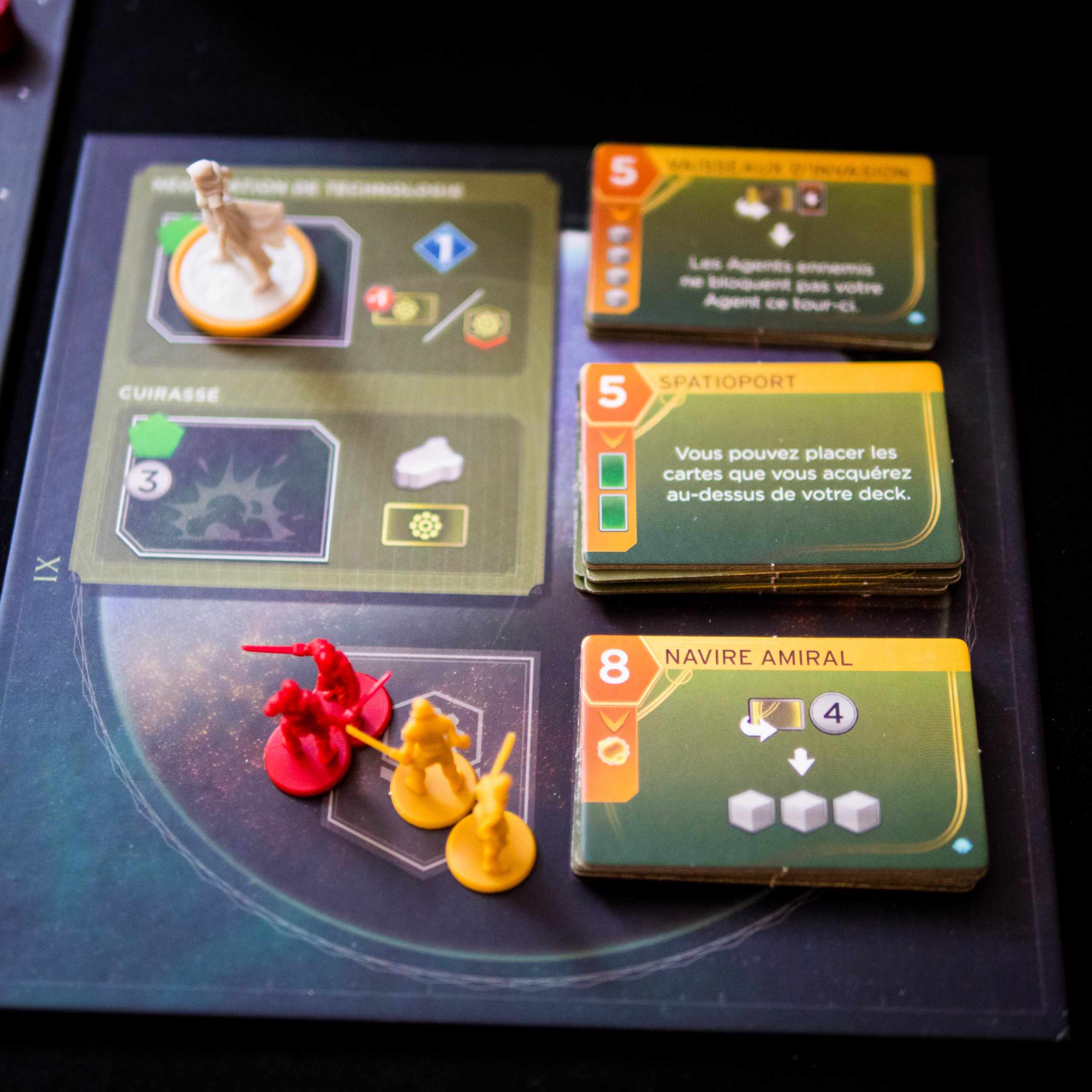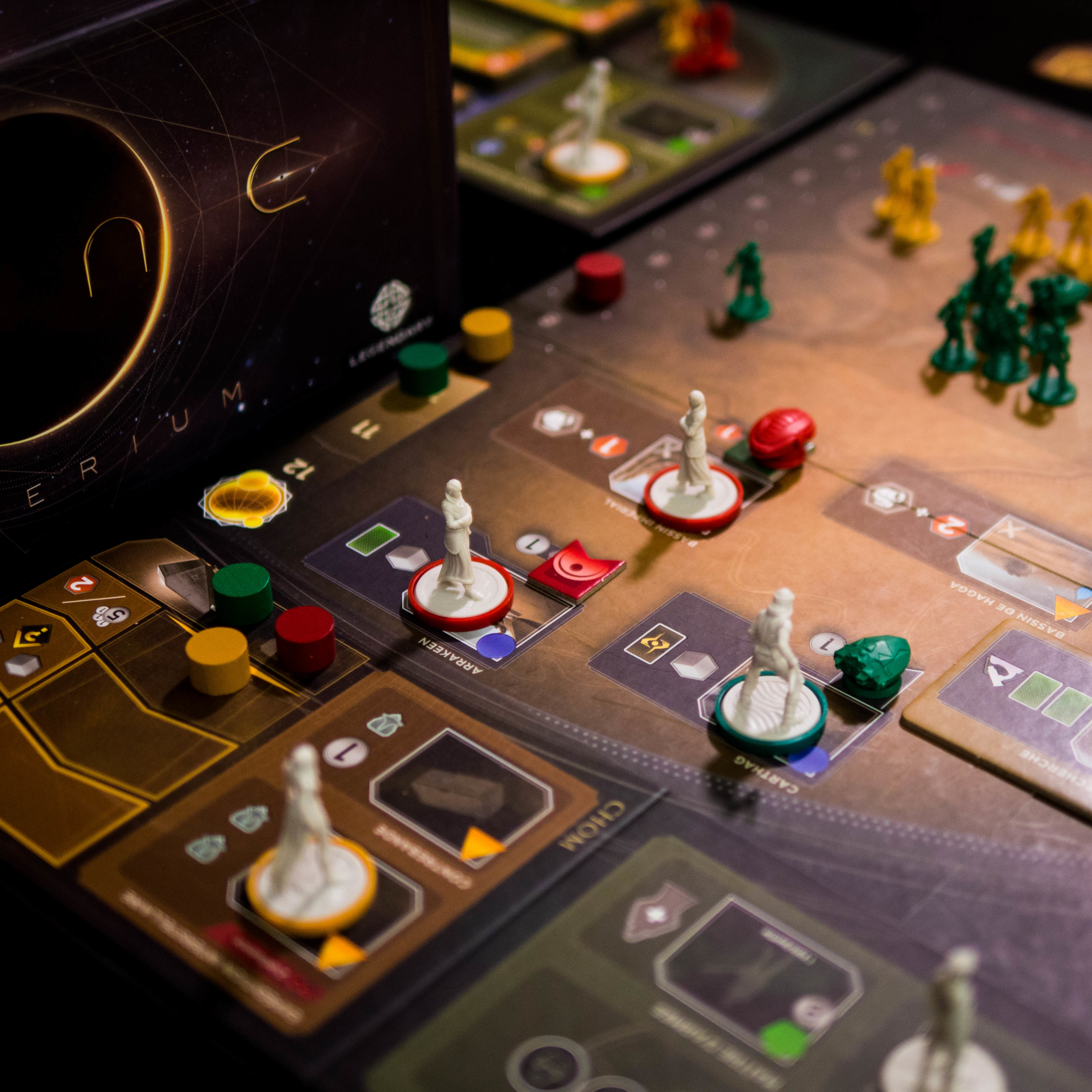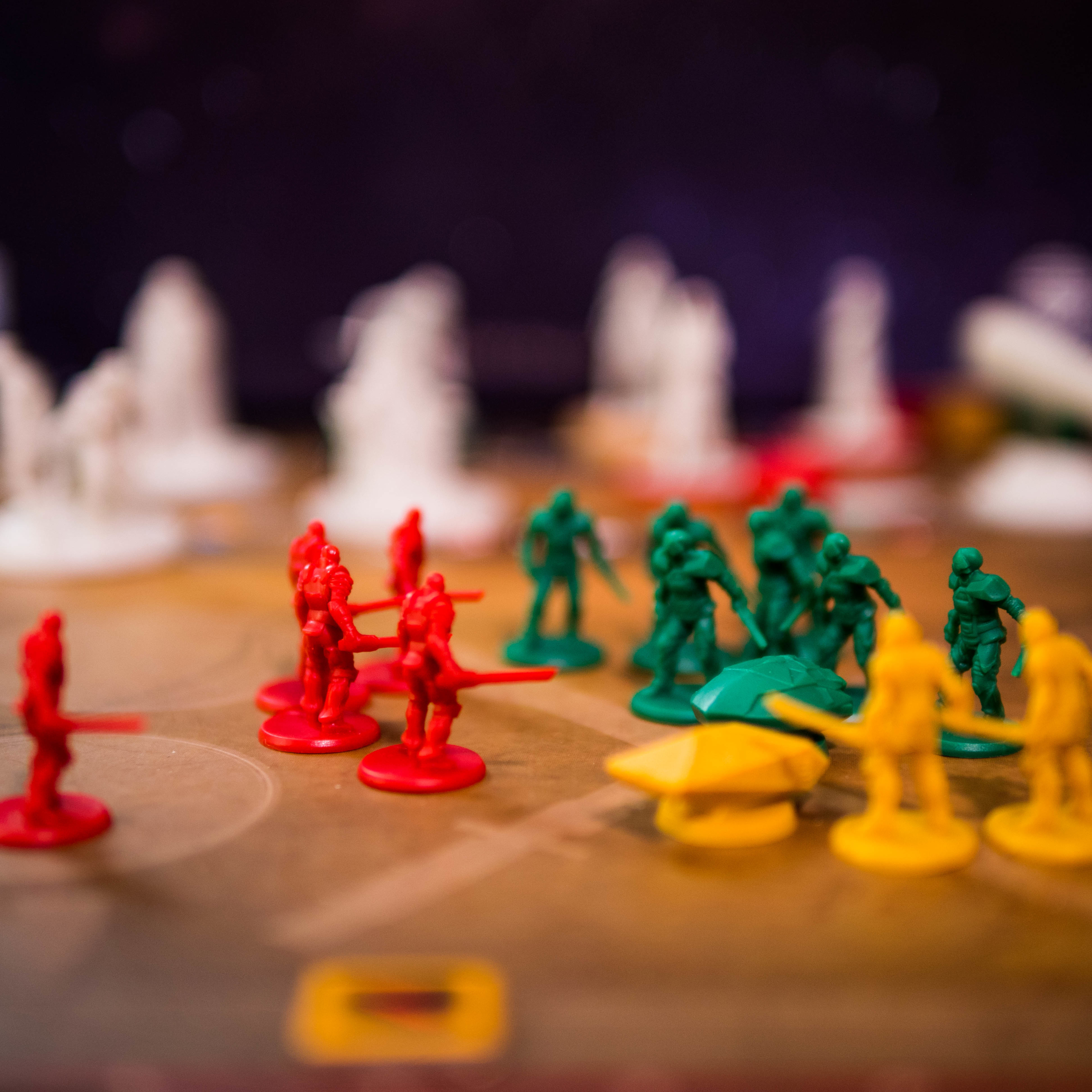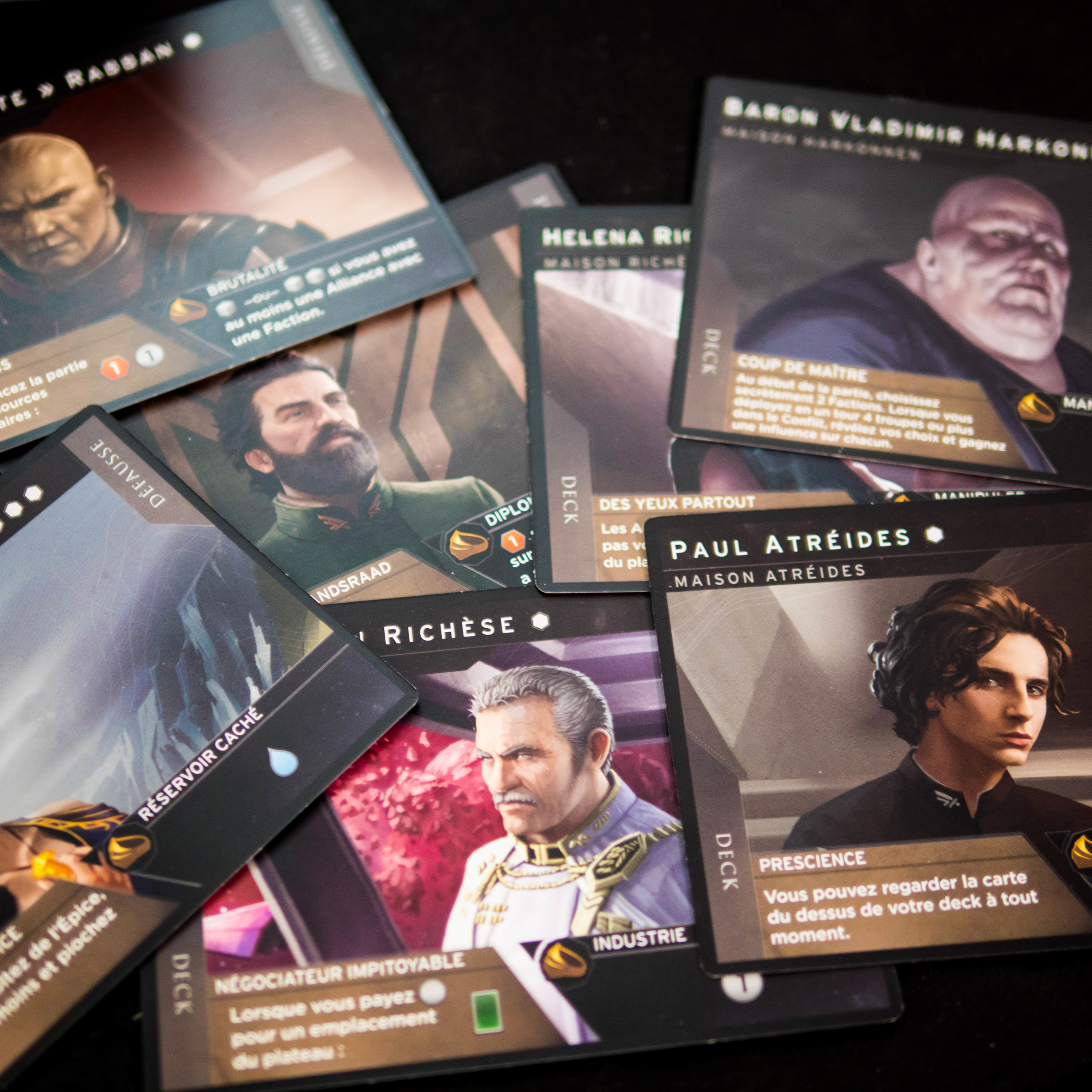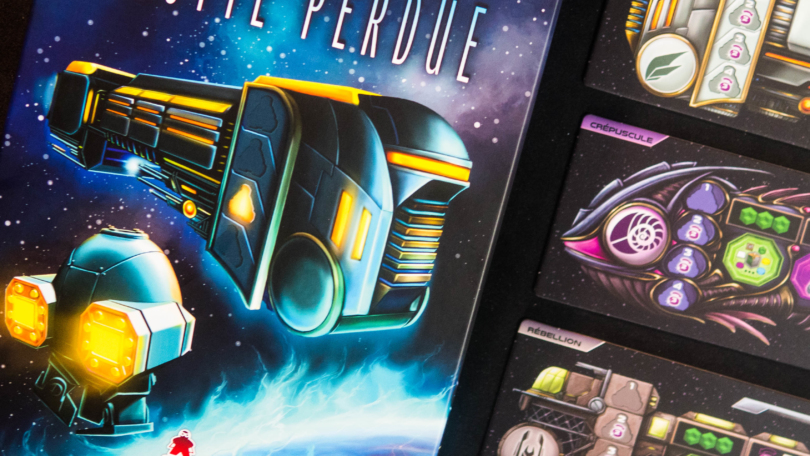The game unfolds over a series of turns divided into three main phases:
➡️ 1. Agent Phase: Each player starts with two agents (and can gain a third later in the game). Players take turns placing their agents on available spots on the board.
To place an agent, a player must play a card from their hand that matches the icon of the location (faction icon, color, etc.).
Each location has specific requirements for placing an agent (e.g., having a certain influence or resource).
Each location allows players to perform specific actions, such as obtaining resources (spice, water, Solari), recruiting troops, gaining influence with factions, or drawing cards.
Some locations are tied to factions and increase a player’s influence with that faction, offering additional advantages and victory points.
➡️ 2. Reveal Phase: After placing all their agents, players reveal the remaining cards in their hand.
These cards provide persuasion points for purchasing new cards from the market and attack points for battles.
➡️ 3. Conflict Phase: Players resolve battles on the board based on the accumulated military strength.
Battle rewards vary (victory points, resources, influence).
Players can play “intrigue” cards at any time to gain bonuses, resources, or other advantages.
The game ends when a player reaches 10 victory points or when the Conflict card deck is exhausted. The player with the most victory points at the end of the final turn is declared the winner.


